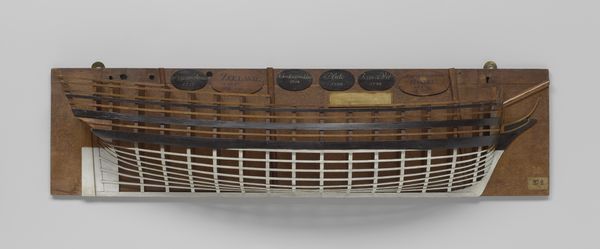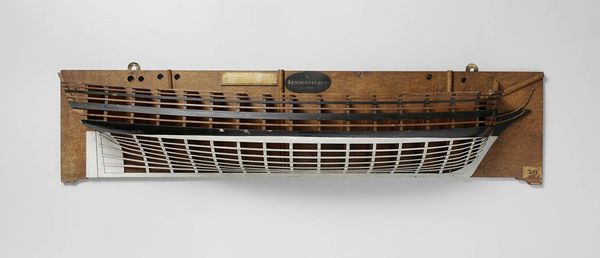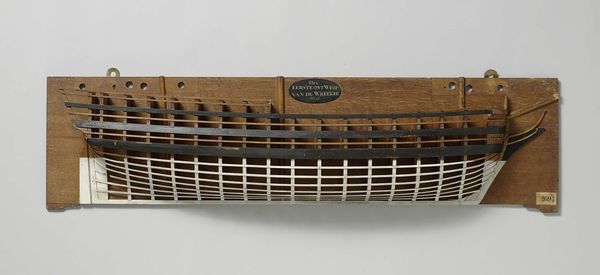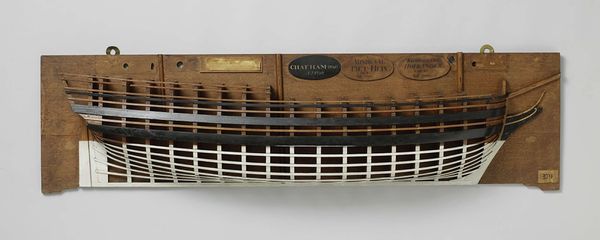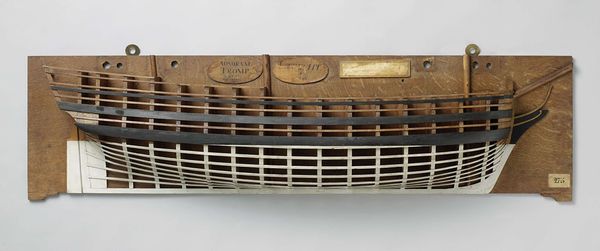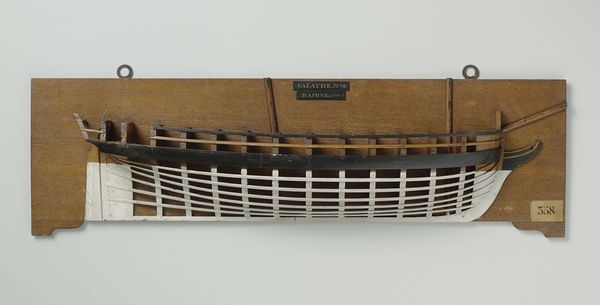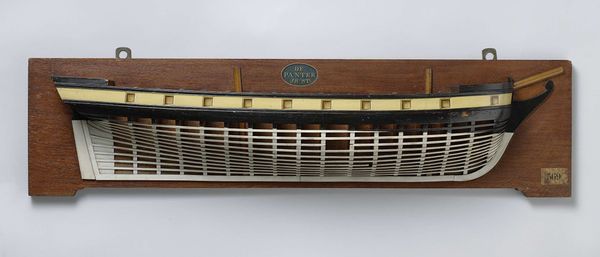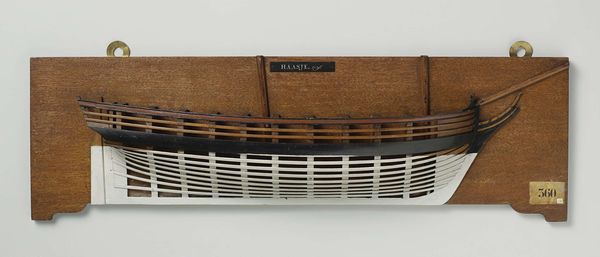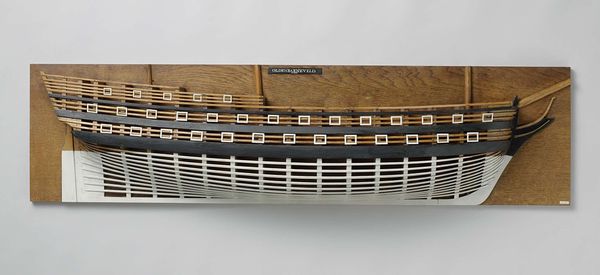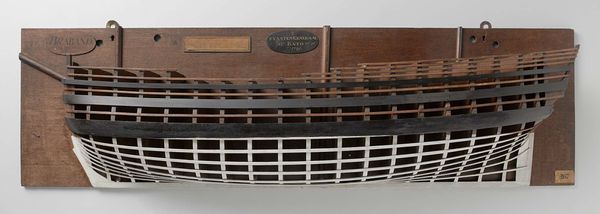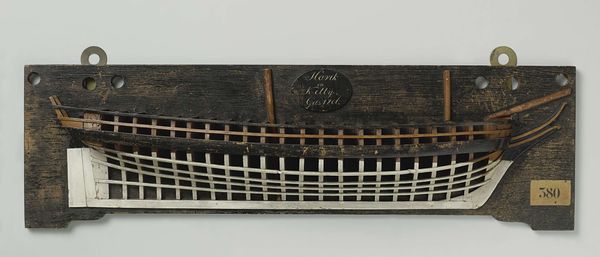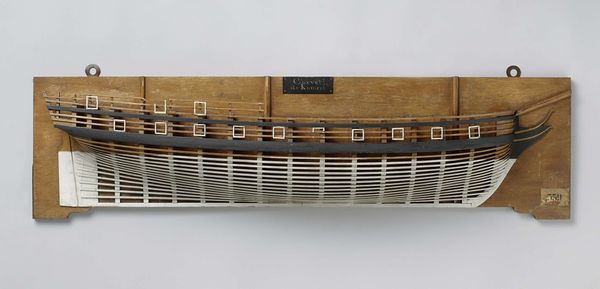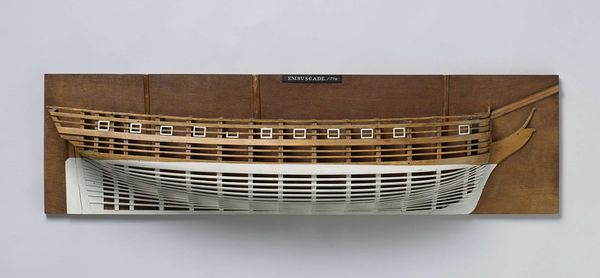
maquette, carving, sculpture, wood
#
maquette
#
carving
#
figuration
#
sculpture
#
wood
Dimensions: height 33.7 cm, width 125.1 cm, depth 14.5 cm
Copyright: Rijks Museum: Open Domain
Curator: This captivating sculpture before us is titled "Half Model of a 32-Gun Frigate," created around 1797. It’s rendered in wood and serves as a maquette, a scale model for a larger vessel. Editor: My first thought is that it evokes a very strong sense of both potential and constraint. It's only half a ship, meticulously constructed yet static, representing the latent power of naval warfare. Curator: Precisely. Consider the intense labor involved, transforming raw timber into this precise representation. The anonymous artisan likely possessed intimate knowledge of shipbuilding techniques and the specific materials required. Editor: And we can’t ignore the socio-political context. This model represents a warship, a tool of imperial expansion and control. What populations were subjugated, what resources exploited to build and man these vessels? Curator: The availability of hardwoods, the organization of the shipyard, even the blacksmith’s contributions, are all part of the story. This isn't simply about aesthetics; it's about understanding the means of production during that era. Editor: Looking at the linear patterns of the hull's framework, I'm reminded of theories around panopticism and surveillance. This ship projects power but also embodies a rigidly controlled social hierarchy. Curator: The model, as a carefully crafted object, suggests the planning and resources committed to such ventures, pointing towards complex economic and colonial forces. Editor: Ultimately, a deeper consideration reveals its relationship to both the artistry involved and the painful legacy of colonialism, naval conflict, and even the roots of international trade and modern supply lines. Curator: Indeed, seeing the detailed work that went into just half of the ship reveals to us something truly intriguing about the priorities of its historical era. Editor: And recognizing both its physical and political constraints makes for a deeper understanding of its implications.
Comments
No comments
Be the first to comment and join the conversation on the ultimate creative platform.

